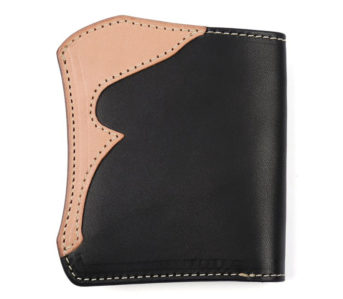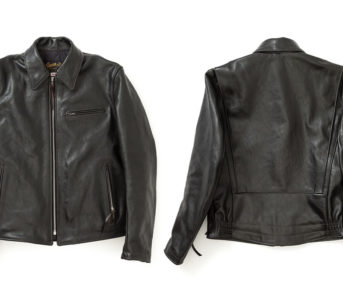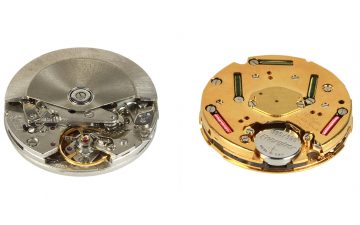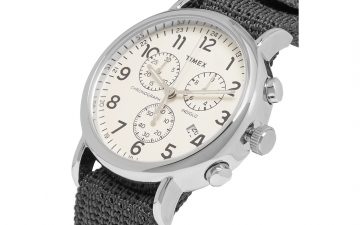In this day and age, a stopwatch is accessible to pretty much all of us, overlooked by many as just one of the hundreds of functions digitally embedded into our smartphones. However, there was once a time where a timepiece that doubled as a stopwatch was groundbreaking. The revolutionary addition found use in aviation, military operations, and even astronomy. This invention was the Chronograph.
What Defines a Chronograph?
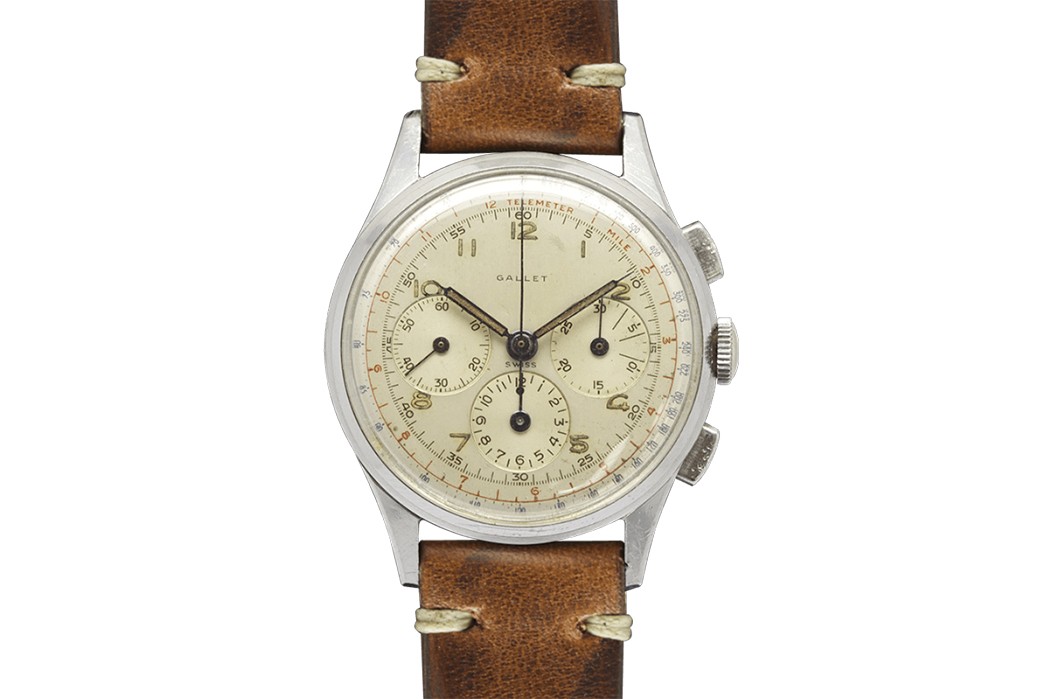
1960’s Gallet Multichron via Horare.
A Chronograph is simply a watch that combines the function of a stopwatch with a timekeeping display watch, by utilizing an independent sweep second hand.
Chronographs often have complications on the face of the watch which can be used to record different time measurements, moon cycles, heart rate and more. Chronographs have separate buttons to stop, start, and reset the stopwatch complication, with the start button typically at the two and four o’clock position.
History of the Chronograph
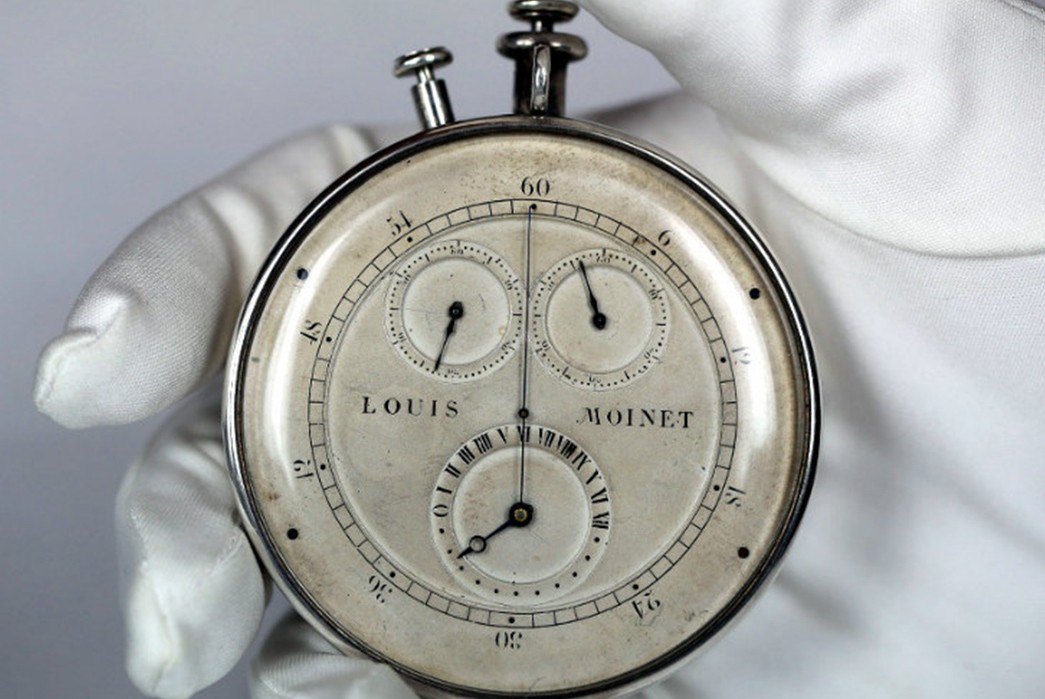
Louis Moinet’s 1816 Chronograph via Egdar Daily
The name Chronograph is derived from the Greek words ‘Chronos’ – the personification of time – and ‘graph’, meaning to write. The first modern Chronograph was created in 1816 by French watchmaker, Louis Moinet. Invented solely for use in union with astrological equipment, Moinet’s Chronograph could measure time accurate to 1/60th of a second – an unrivaled degree of precision at the time of its creation.
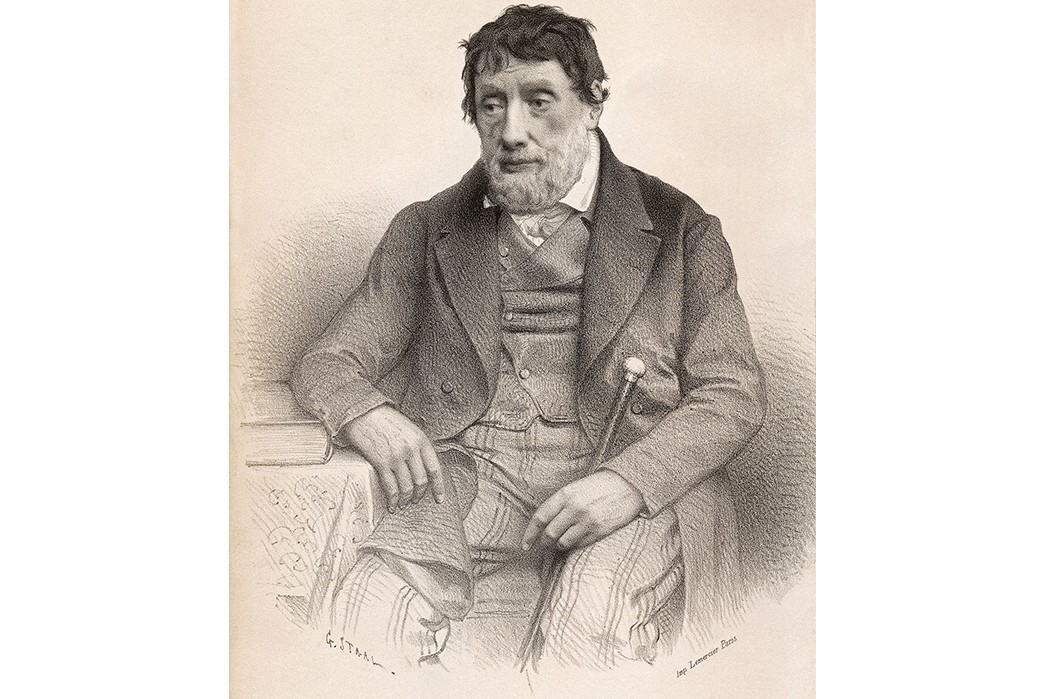
Louis Moinet via Wikipedia.
While Moinet’s watch is considered the earliest modern Chronograph, the first timepiece to be publicly marketed as a Chronograph was invented by Nicolas Mathieu Rieussec, watchmaker of the French King Louis XVII.
The king commissioned Rieussec to create a timepiece which he could use to record the lap time of his beloved horse races – and on his Majesties command – Rieussec created the first commercialized modern Chronograph in 1821.
Rieussec’s Chronograph composed of two faces, with one face using the kinetic energy of the Chronographs movement to move a small, inked needle. The needle then marked a circle on one of the faces which would be used to indicate the time elapsed.
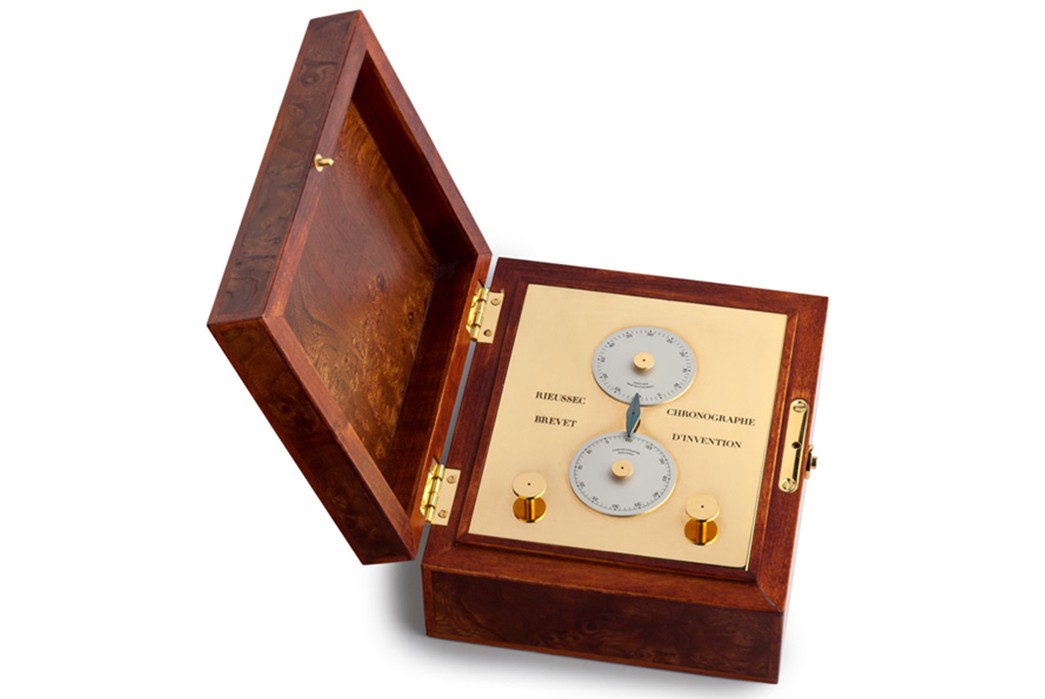
Rieussec’s 1821 Chronograph via Horobox.
Rieussec’s Chronograph, however, was unsuitable for multiple uses due to its thirst for ink. Swiss watchmaker, Adolphe Nicole made further developments to the Chronograph in 1844. He was the first to add a re-setting feature which allowed for successive measurements to be taken without ink.
This update was pivotal for the Chronograph, and before long, they were being used by the military to time artillery strikes, and in a variety of sports, especially running. Athletics were revolutionized by the Chronograph, with lap times now so accurate, athletes worked harder than ever to beat records by precise margins.
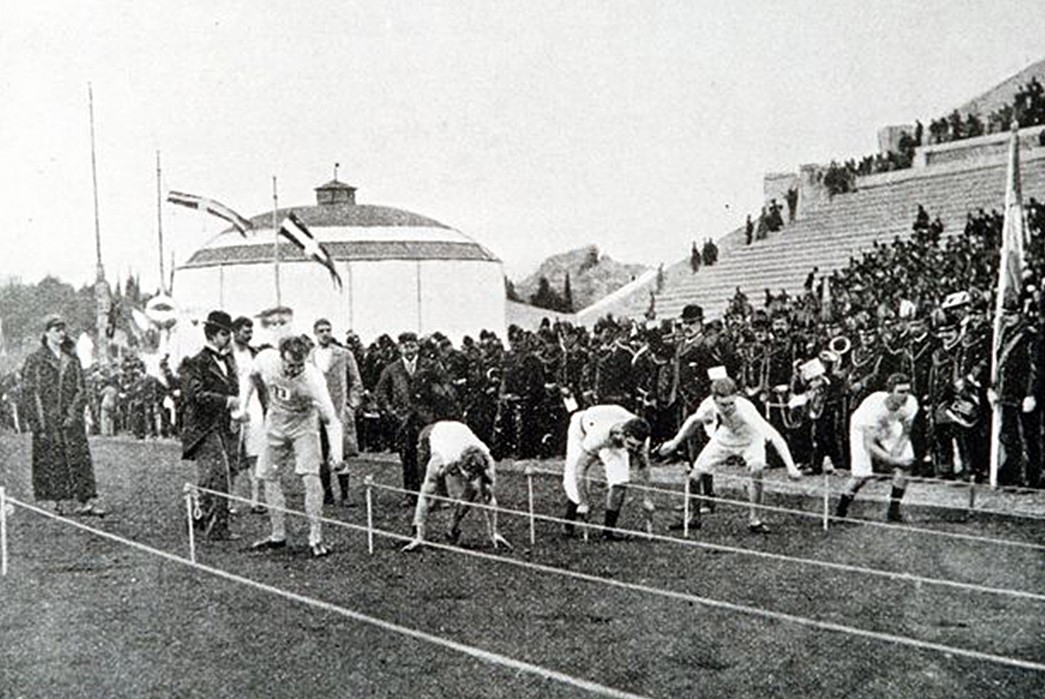
Runners at the 1896 Olympic games via The Daily Mail.
At this point, Chronographs were still just stopwatches, either encased in a small wooden box or round metal case, it wouldn’t be until the early twentieth century that Chronographic stopwatch functionality would be miniaturized and integrated into timekeeping wristwatches.
How Did Chronographs Develop?
Swiss watch manufacturers, Longines built one of the earliest Chronograph wristwatches in 1913. It was a timepiece which doubled as a timekeeping display watch, with a stopwatch complication accurate to 1/5th of a second. Before long, other recognized watchmakers followed suit by producing their own Chronograph wristwatches. British maker Breitling introducing the first Chronograph with a separate pusher for operating the stopwatch complication.
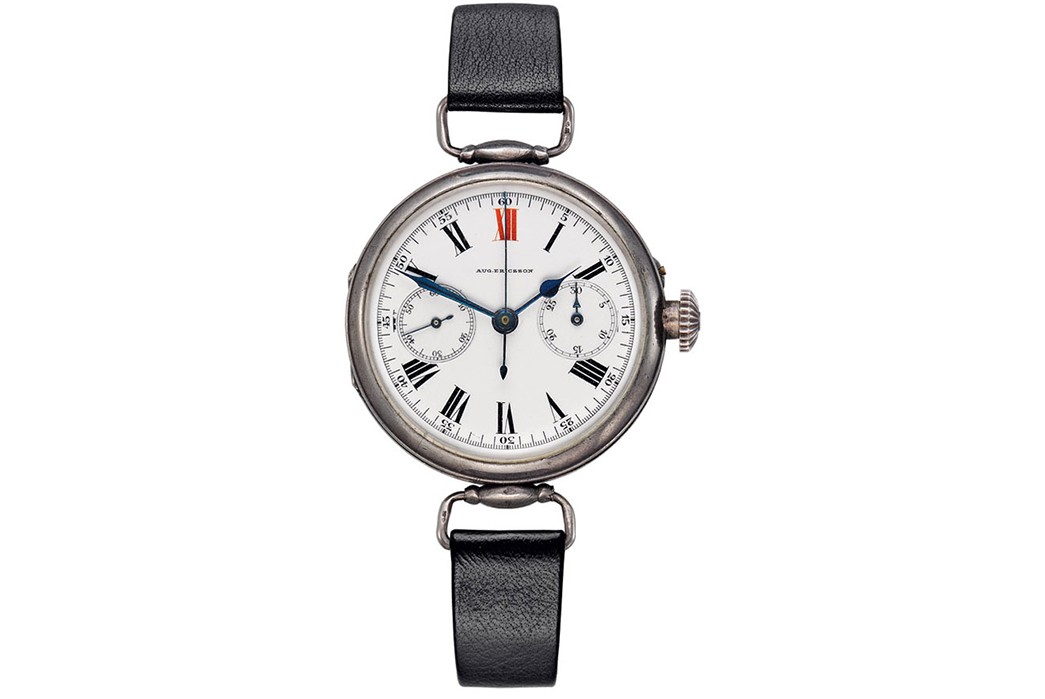
“1913 Longines 13.33z Monopusher watch via Monochrome Watches”
A complication which added a whole new level of functionality to the Chronograph was the addition of a Tachymeter in the early twentieth century. The Tachymeter is a scale is marked out onto the bezel of a watch, which allows the wearer to calculate speed based on travel time (or vice versa measure distance travelled based on speed) by using mathematical equations, and the time measuring complications on the Chronograph. This saw the Chronograph become an invaluable tool within aviation, naval operations, and submarine navigation.
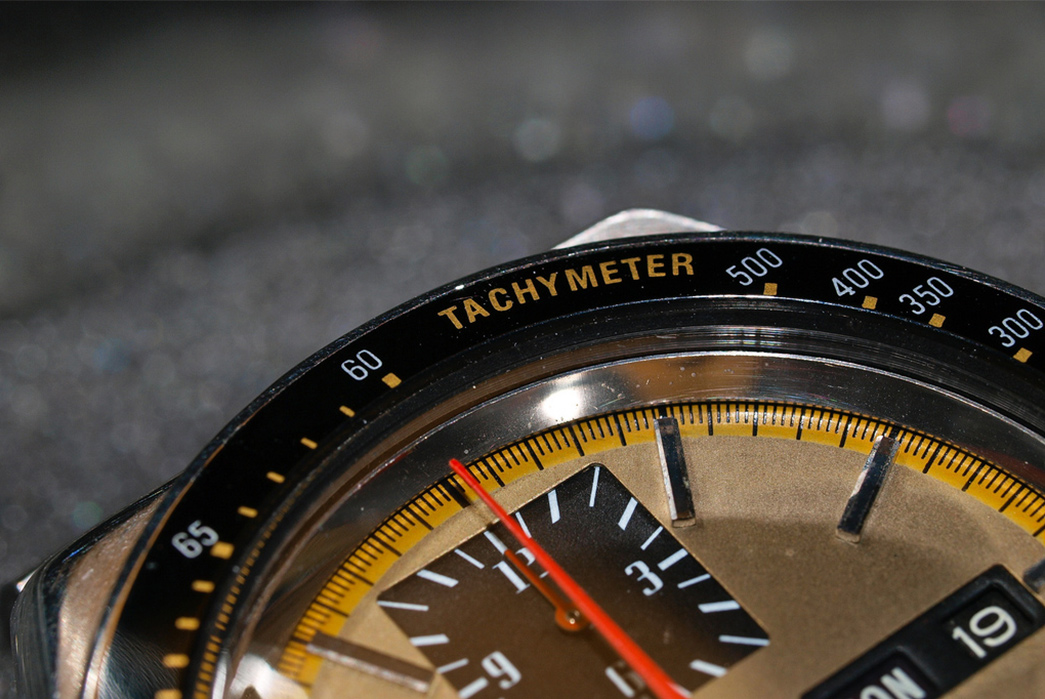
The tachymeter of a Seiko Speed-Timer via Flickr.
Fast forward to the late ’60s, and watch manufacturers were racing to release the first automatic Chronograph. Prolific watchmakers Hamilton, Heuer, Breitling, and Buren, collaborated and worked secretly with movement experts Dubois-Depraz, to create and patent an automatic movement known as Caliber 11 – also known as ‘Chronomatic’. Iconic Chronographs such as the Breitling Navitimer and Heuer Carrera are among those that debuted in 1969.
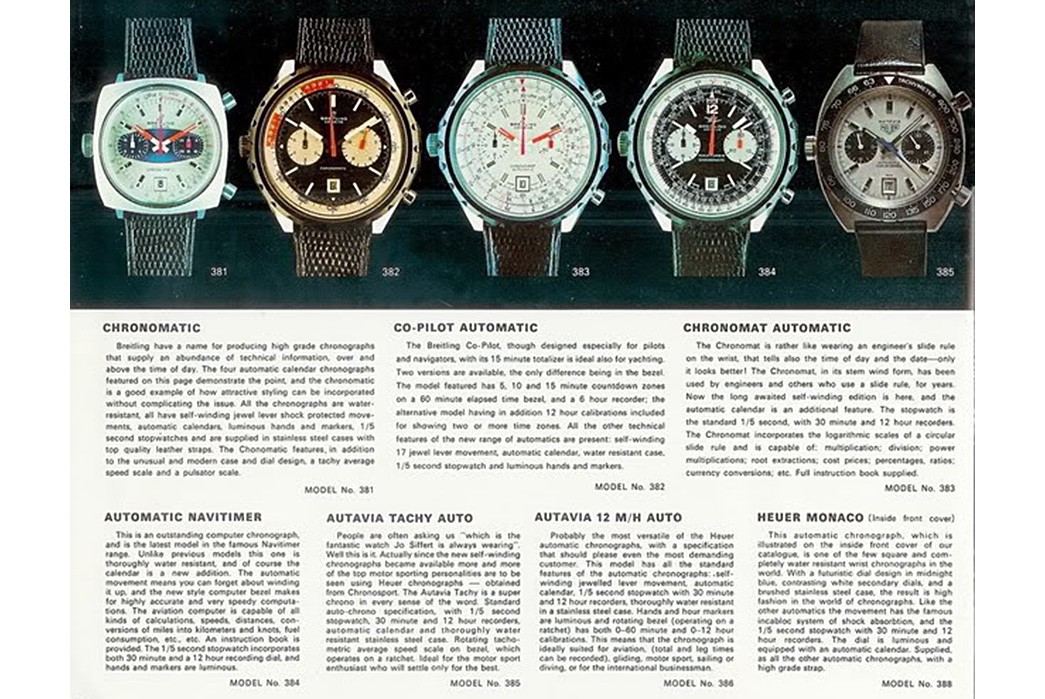
Vintage advertisement for Automatic Chronographs via Monochrome Watches.
How Chronographs Work
The modern Chronograph features three push buttons on the side of the face, which are used to control the stopwatch, and other complications the chronograph may have. The ‘start/stop’ button is located adjacent to two 0’clock in the watch face, and is pushed once to begin – and stop – the stopwatch. When the start button is pushed, it triggers a network of train wheels to turn in unison, recording the time elapsed until the button is pushed to stop the movement.
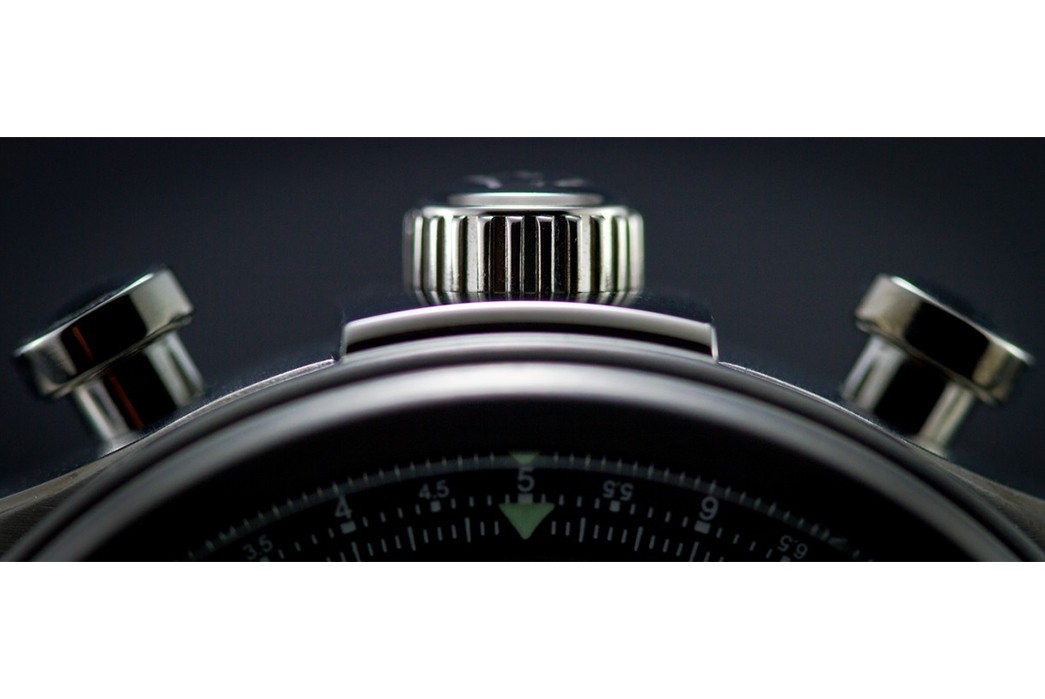
“Pushers on a Victorinox Chronograph via Watch Report”
While the stopwatch is the Chronograph’s premier selling point, different watches can include a plethora of other complications like moon cycles display, heartbeats recording, and measuring speed/distance using a Tachymeter bezel.
Iconic Chronographs
Rolex Daytona
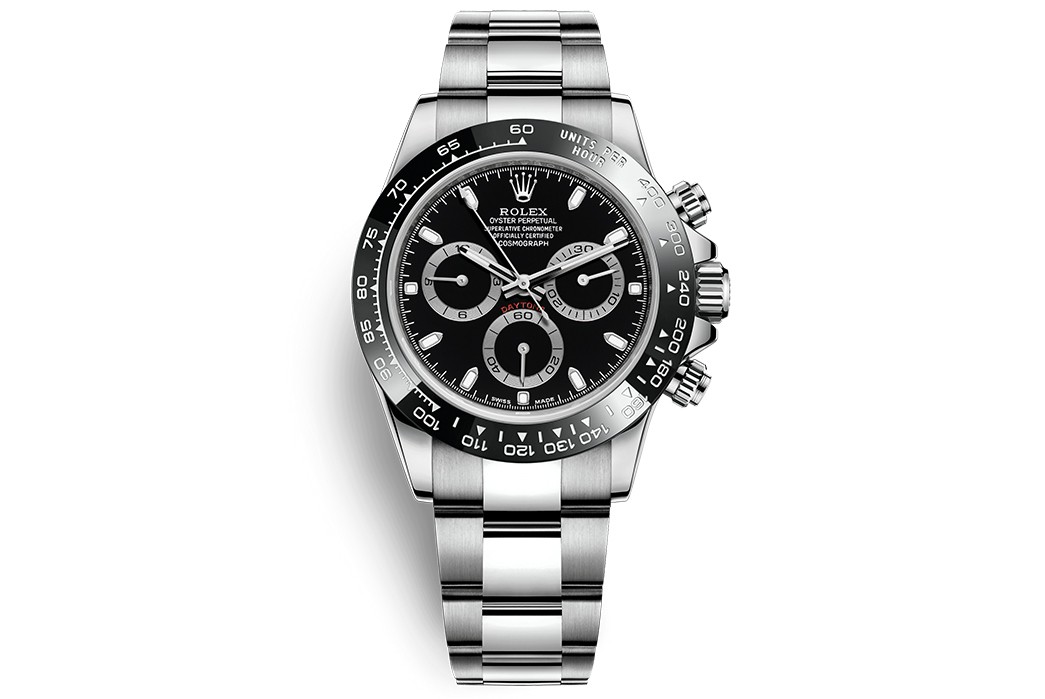
Image via Rolex.
First introduced in 1963, this archetypal Rolex is named after the Daytona international speedway in Florida. Designed to meet the needs of race drivers at the highest level, the Rolex Daytona is an automatic wristwatch fitted with a rotating tachymetric bezel which can measure speeds up to 400/khm. A 40mm steel oyster case houses a scratch-resistant sapphire crystal, ensuring clear readings of the face, with a stopwatch accurate to 1/8th of a second and 12-hour 30-minute and seconds sub-dials.
Omega Speedmaster Professional
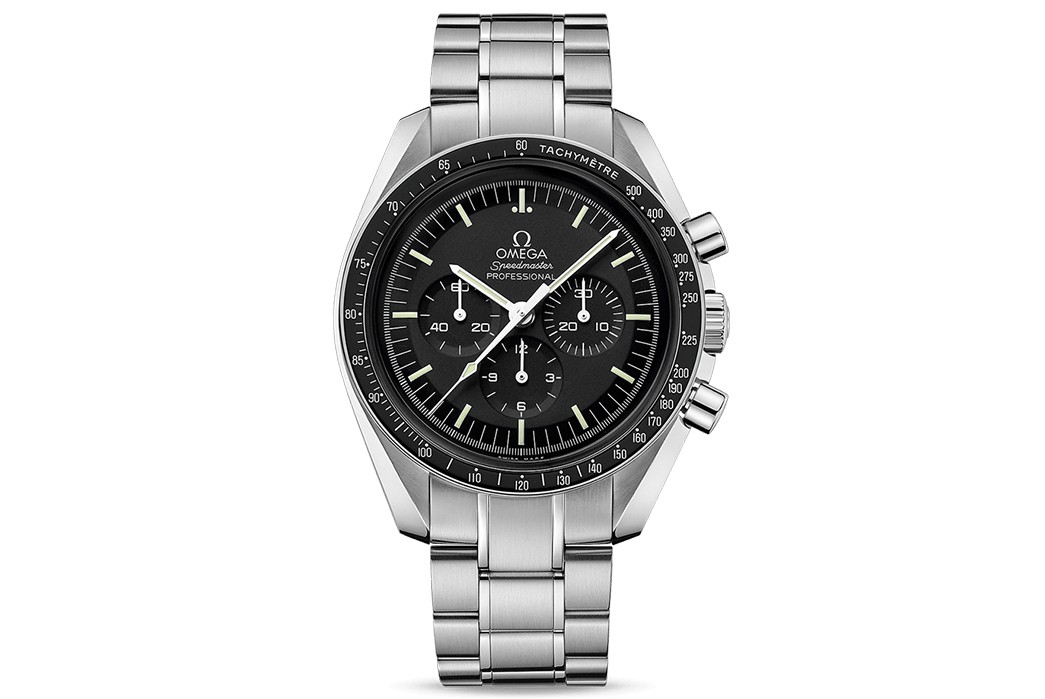
Image via Omega.
Released in 1969, the Omega Speedmaster is the Chronograph which famously helped save the skins of the astronauts aboard the Apollo 13 spacecraft. When systems aboard the Apollo 13 failed, members of the crew used an Omega Speedmaster to precisely time the remaining engine bursts to successfully return to earth in one piece.
The Speedmaster was etched into history that fateful day and still remains a popular watch to date. With a rotating Tachymeter, the Omega Speedmaster sports a 42mm stainless steel case, with a hesalite crystal protecting the face, which is equipped with a 30-minute recorder, 12-hour recorder, and a seconds sub-dial.
Tag Heuer Carrera
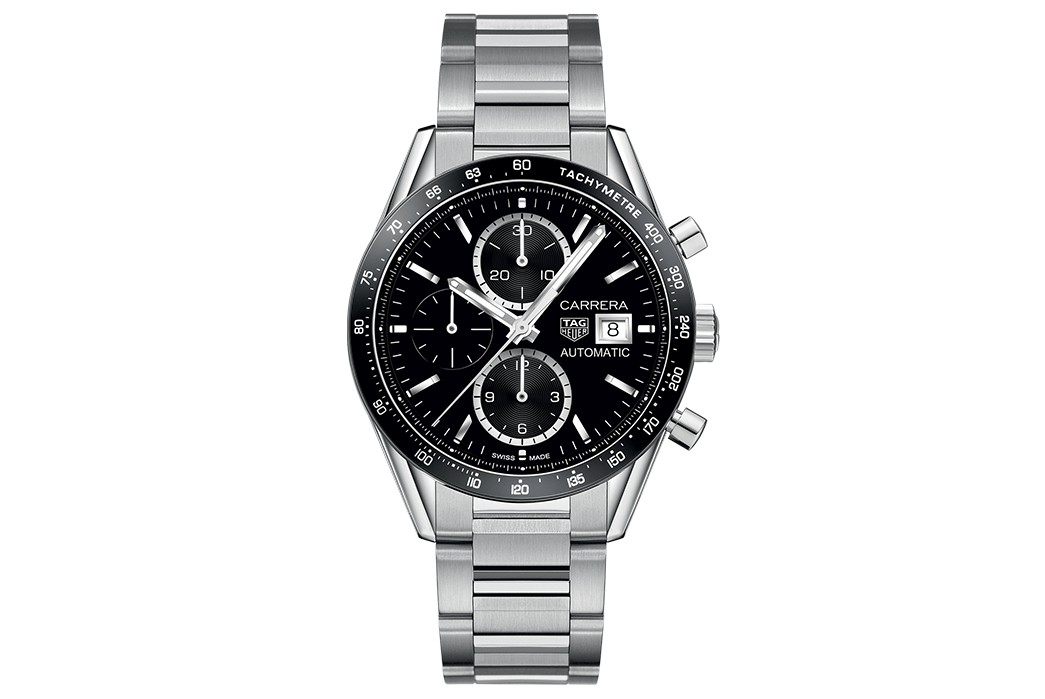
Image via Tag Heuer.
Another classic Chronograph inspired and built for Motor Racing, the Tag Heuer Carrera is named after the Carrera Panamericana road race. With an industrial yet handsome stainless steel 43mm case, the Carrera is an automatic chronograph with a scratch-proof sapphire crystal, and a ceramic tachymetric bezel. With the similar complications to the Speedmaster and Daytona, the Tag Heuer Carrera also has an additional day/date display at three o’clock.
Breitling Navitimer
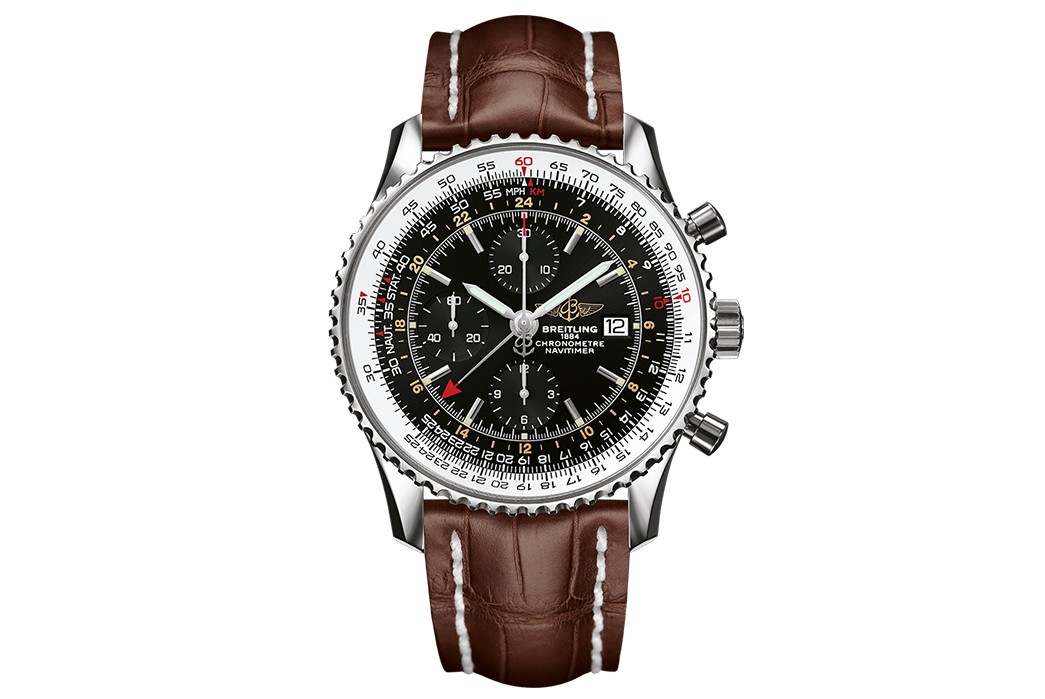
Image via Breitling.
Among the first automatic Chronographs to surface in the late ’60s, the Breitling Navitimer is widely admired in the world of horology as a truly iconic chronograph. With a wider, 43mm case, the Navitimer quickly became popular among pilots and aeronautical enthusiasts due to its bidirectional ratcheted rotating bezel which makes for meticulous tachymetric readings.
With a stopwatch complication accurate up to 1/4th of a second -30-minute , 12-hour, and a seconds sub-dials – and a date display, the Navitimer traditionally comes with a leather strap for instant comfort and effortless style.



